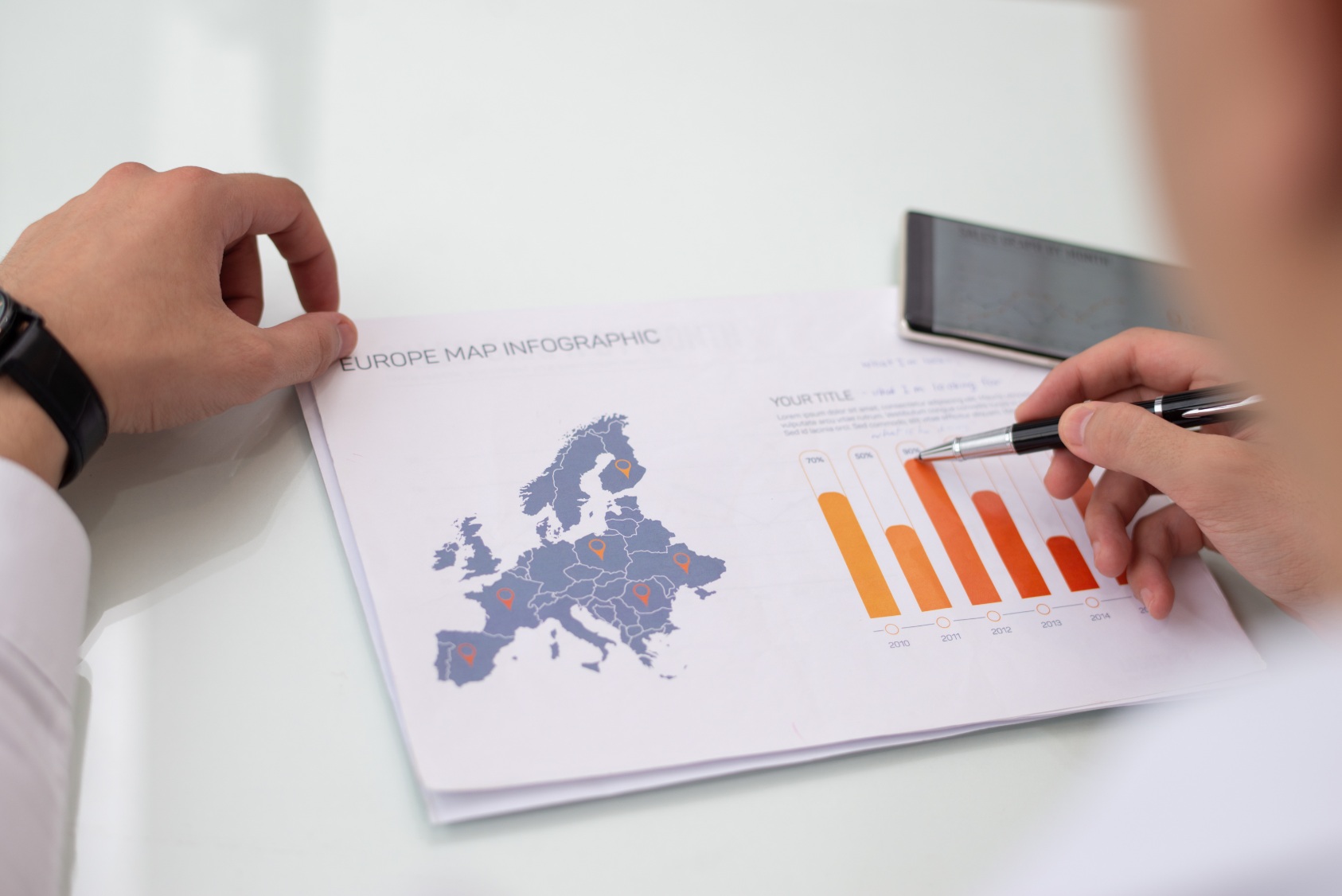Export Value-Added Tax (VAT) Refund Guide For Turkey
- MHRPartner
- Export, Tax, Turkey
- 0 Comments
MHR & Partners Academy
Exports ranks first in Turkey’s source of foreign currency revenues. One of the issues that exporting companies in Turkey are most curious about is how to collect VAT refund receivables in exports. In this guide, we clarify the issues that taxpayers are curious about the export VAT refund.
What is Export VAT Refund?
Value Added Tax (VAT) is a type of tax levied on the final consumer. There is a delivery of goods or services between companies until it reaches the final consumer. The companies collect the Value Added Tax from the buyer as responsible and declare the remaining amount as responsible after deducting the VAT amount paid by them.
In cases where companies do not calculate or collect VAT in the deliveries they have made within the scope of the full exemption in the VAT law, they can request the return of the VAT amount they have paid or burdened from the tax office. The issues in the VAT General Communiqué are valid when requesting VAT refund.
In VAT legislation, deliveries within the scope of full exemption are listed. Export deliveries are also within the scope of full exemption. The VAT amount that is incurred for export deliveries and cannot be eliminated through discounts can be refunded.
Amount Limits in Export VAT Refund Claim
VAT amounts not exceeding 5.000 TL (10.000,00-TL to be applied in returns arising from transactions after 01.05.2022) can be refunded in cash without the need for a Certified Public Accountant or Tax Inspection Report. In cash refund requests exceeding this amount, a Certified Public Accountant or Tax Inspection Report is required.

The Path to be Followed in Cash VAT Refund Requests
VAT Law No. 3065 (11/1-a) Article (10.000,00-TL to be applied in refunds arising from transactions after 01.05.2022) in cash refund requests exceeding 5.000 TL related to the export of goods made within the scope of Article (10.000,00-TL), the stages to be followed by taxpayers and the issues regarding the refund process are given below.
1. Determination of VAT Declaration Period
According to Article (11/1-a) of the Value Added Tax Law, export deliveries and services related to these deliveries and services performed for customers abroad are exempted from value added tax. According to Article (12/b) of the same Law, in order for a delivery to be considered as an export delivery, the goods subject to delivery must leave the customs territory of the Republic of Turkey and arrive in a foreign country.
The exemption related to the export of goods is declared with the VAT declaration for the taxation period that includes the “closing date” of the customs declaration, which is the date of export.
In export deliveries, the date on which the customs declaration is closed by the border customs is accepted as the date of export realisation.
Accordingly, the event giving rise to the exemption and VAT refund right in export deliveries occurs on the date when the exported goods leave the Turkish Customs Territory. Therefore, even if the date of issuance of the export invoice and opening of the customs declaration is earlier, export deliveries should be declared in the taxation period that includes the actual export date when the goods leave the Turkish Customs Territory.
– The export price shall be converted into TL at the foreign exchange buying rate of the Central Bank of the Republic of Turkey, which was first published before the closing date of the customs declaration.
– Journal entries must be made taking into account the “actual export date”. The export price should be written in the declaration, including freight and insurance costs.
On the other hand, unless the goods are actually exported – except for the delivery of the goods at the seller’s workplace in Turkey – the sales contract is considered incomplete. Then, no accrued profit can be mentioned. In this case, since the sale is realised as of the date the goods leave the customs territory, the income is accrued as of this date. The fact that the invoice is issued first in export transactions has no effect on the period in which the income is generated in terms of corporate tax. In terms of determining the period of income, the taxable event in export transactions occurs on the date the goods leave the customs territory. In this case, the earnings of the company arising from the mentioned exports should be associated with the period earnings based on the date the goods leave the customs territory.

2. VAT Return Request Process
Article 32 of VAT Law No. 3065 states:
“The Value Added Tax shown on invoices and similar documents related to the transactions exempted from tax pursuant to Articles 11, 13, 14 and 15 of this Law and subparagraph (s) of paragraph (4) of Article 17 shall be deducted from the Value Added Tax to be calculated over the taxable transactions of the taxpayer. In cases where the taxable transactions do not exist or the calculated tax is less than the tax to be deducted, the Value Added Tax that cannot be deducted is refunded to those who make these transactions according to the principles to be determined by the Ministry of Finance and Customs, provided that it is requested until the end of the second calendar year following the period in which the transaction took place.” This provision is valid as of 01.01.2019.
In the return requests arising from the deliveries and services subject to the reduced rate, the application must be made by the end of the year following the taxation period in which the delivery and service is performed (with the VAT declaration of November of the following year).
Taxpayers can make a VAT refund request with a standard refund request petition throughthe internet tax office after submitting the VAT Declaration No.1.
The following documents are required in the export VAT refund request:
– Standard refund request petition
– Sales invoices list
– Customs declaration or list (Free zone transaction form for exports to the free zone, electronic trade customs declaration for exports via mail or cargo)
– VAT list to be deducted for the period in which the export is declared
– Loaded VAT list
– Return Requested VAT Calculation Table.
All of the above-mentioned lists are sent virtually via the internet tax office. However, for cash refunds over 5 thousand (10.000,00-TL to be applied for refunds arising from transactions after 01.05.2022), if a Certified Public Accountant report is written, copies of export invoices and Customs Exit Declarations are attached to the report.

3. Evaluation of VAT Refund Request
The fulfilment of the VAT refund request to be made by the taxpayer by the tax office is as follows:
1) The VAT refund request petition and the documents listed above are completed and uploaded to the VATIRA system.
2) “VAT Refund Control Report” is generated by KDVIRA system.
3) Some documents need to be confirmed.
4) The following conditions (Collateral / Certified Public Accountant Report / Tax Inspection Report) are expected to be realized.
a) VAT Refund Against Collateral
In the cash refund requests of the taxpayers arising from this transaction, VAT refund is made if collateral is shown without submitting the Certified Public Accountant report. The collateral in question is resolved according to the result of the tax inspection report or Certified Public Accountant report.
In the event that the Certified Public Accountant report related to this return is not submitted within six months from the date of VAT refund against collateral, the collateral in question is resolved according to the result of the tax inspection report.
b) VAT Refund Based on Sworn Financial Advisor Report
In the cash refund requests of the taxpayers arising from this transaction, the cash refund request is fulfilled if the Certified Public Accountant report is submitted.
c) VAT Refund with Tax Inspection Report
In the following cases, the refund requests of the taxpayers are fulfilled according to the result of the tax inspection report issued by those authorised to carry out tax inspection.
– They want to receive their refunds as a result of the tax inspection report,
– Failure to provide collateral or declare that they will receive their refunds with a Certified Public Accountant report
d) Returns to Taxpayers with “HİS Certificate”
“HİS Certificate” is an application that aims to quickly finalise the VAT refund requests of taxpayers who pay their taxes on time, are not on the black list in terms of VAT application and are called large taxpayers in terms of their financial statements.
The refund requests of the taxpayers holding the HİS certificate are fulfilled regardless of the amount, without collateral, Tax Inspection Report or Certified Public Accountant report.
In the cash refund requests of these taxpayers, the amounts that are not found to be negative as a result of the query made by the KDVIRA system regarding the submitted documents are refunded within five business days following the completion of the report. The refund of the VAT amounts related to the purchases for which a negativity is detected is fulfilled provided that the negativity is eliminated or the required conditions are met.
Related Posts

- MHRPartner
- 8 February 2025
Germany Tax System for Companies
Mehmet Akif Özmen | Sworn Financial Advisor – CPA | Founder, CEO Germany stands out as o ..

- MHRPartner
- 8 July 2024
Common Mistakes Entrepreneurs Make When Setting Up a Business in Europe
Mehmet Akif Özmen | Sworn-in CPA | Founder, CEO “Learn from the lives of others. One ..






